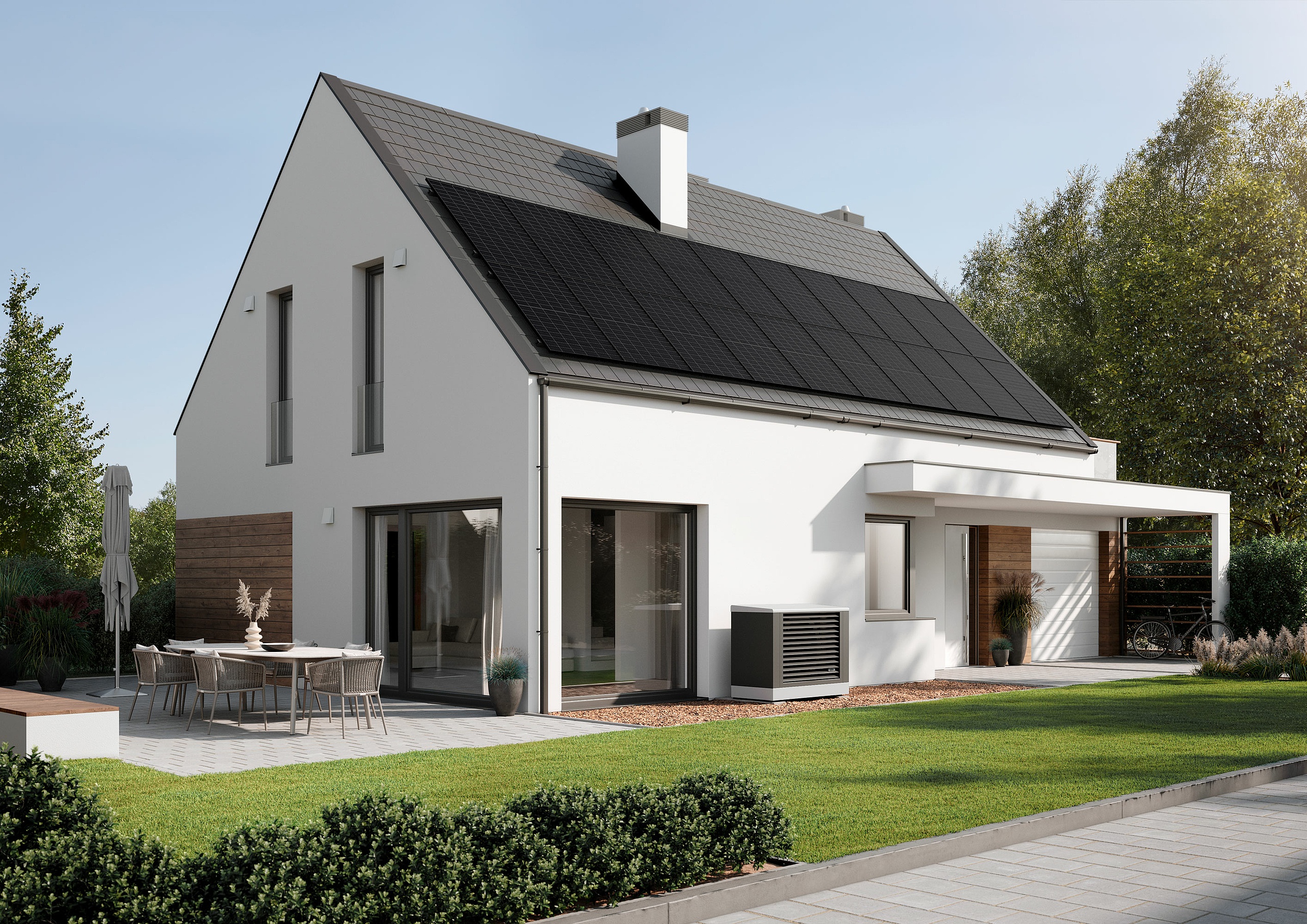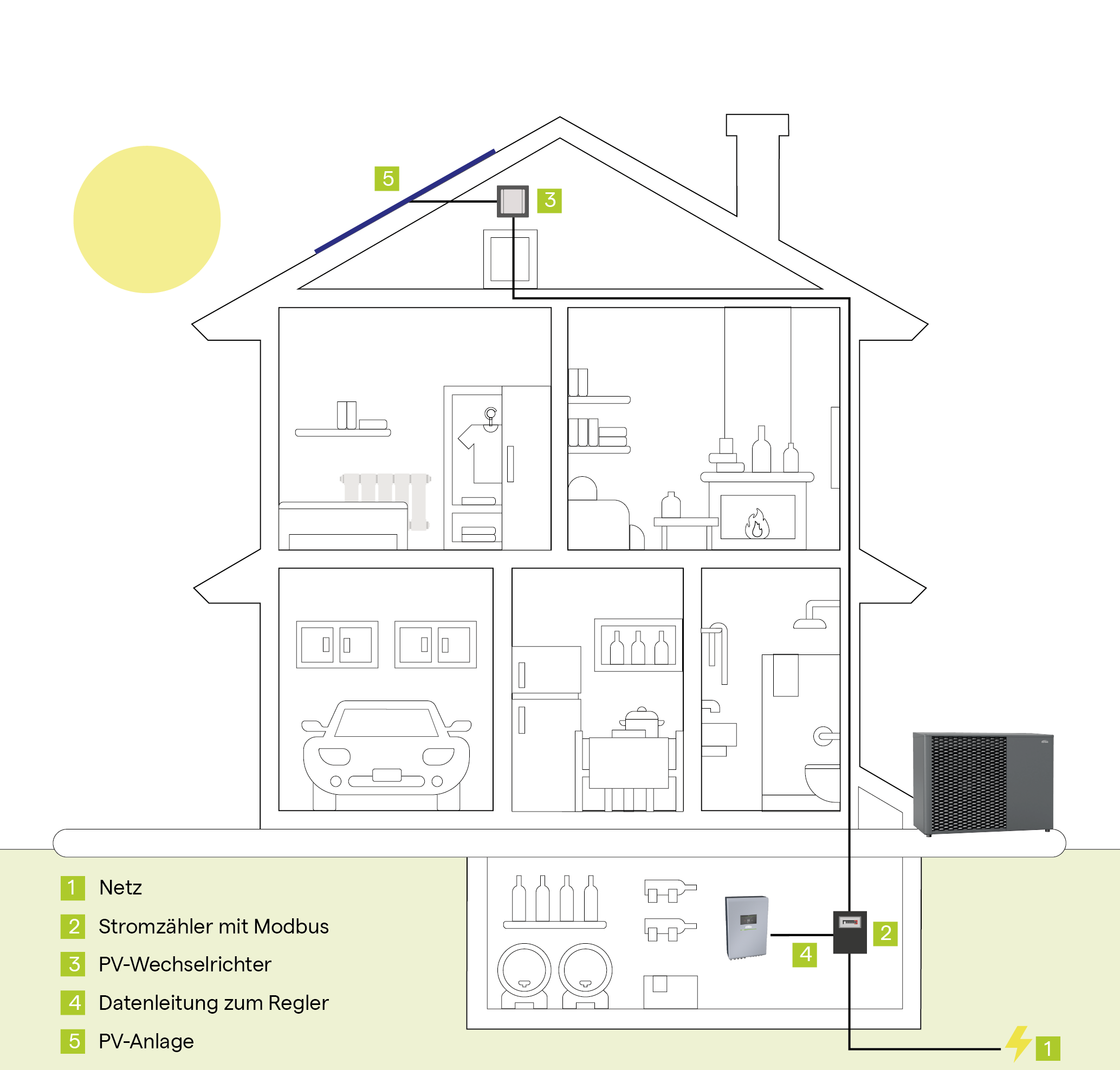Optimising your own electricity: heat pump and photovoltaics

Combining a heat pump with a photovoltaic system offers not only ecological benefits but also considerable economic potential. The free energy of the sun can be used for efficient and CO₂-neutral heating of buildings.
- High level of independence: A largely independent heat supply, detached from external electricity price fluctuations, is possible.
- Reduced operating costs: The free solar power can be used directly, minimizing the need to purchase expensive grid electricity.
- Environmental protection: A significant contribution is made to reducing CO₂ emissions.
- Efficient storage: Surplus solar power can be stored as heat or cold for later use.
- Integrated technology: KERMI heat pumps are optimally prepared for cooperation with photovoltaic systems.
This interactive application vividly illustrates how the optimization of self-generated electricity works. It visualizes the energy flow: from the photovoltaic system, direct use in the household and storage in the battery storage system, through to the preferred use of surplus solar power by the heat pump for heat generation. This illustrates how self-generated electricity is optimally retained within the building, minimizing dependence on the public power grid.
Extra tip
The synergy of heat pumps and photovoltaics. Heat pumps require electrical energy to operate. If this electricity is generated by your own photovoltaic system, the benefits are twofold: Operating costs drop significantly and the CO₂ footprint is reduced. Instead of feeding surplus PV electricity into the public grid at low feed-in tariffs, it can be used directly for heat generation in the building. This is both an economical and sustainable solution.
KERMI x-change heat pumps utilise PV electricity

In combination with a photovoltaic system, x-change heat pumps maximise the use of your own electricity for heating and cooling and also offer considerable economic potential. The free energy from the sun can be used to heat buildings efficiently and CO₂-neutrally.
- Reduction of own energy costs through power-controlled operation
- Storage of surplus electrical energy in heat through intelligent control of the heat pump and heating rods
- Utilisation of own electricity for building temperature control (heating and cooling)